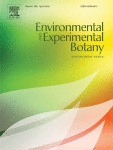Ver ítem
- xmlui.general.dspace_homeCentros Regionales y EEAsCentro Regional Patagonia NorteEEA BarilocheArtículos científicosxmlui.ArtifactBrowser.ItemViewer.trail
- Inicio
- Centros Regionales y EEAs
- Centro Regional Patagonia Norte
- EEA Bariloche
- Artículos científicos
- Ver ítem
Local adaptation along a sharp rainfall gradient occurs in a native Patagonian grass, Festuca pallescens, regardless of extensive gene flow
Resumen
Increasing global aridity combined with changing environmental conditions might cause irreparable alterations in arid and semiarid ecosystems. Knowledge of within-species genetic diversity and adaptive responses, especially along climatic gradients, becomes critical to inform management, conservation and restoration efforts. We combine the analysis of neutral (microsatellites) and adaptive divergence (morphological traits in common garden experiments)
[ver mas...]
Increasing global aridity combined with changing environmental conditions might cause irreparable alterations in arid and semiarid ecosystems. Knowledge of within-species genetic diversity and adaptive responses, especially along climatic gradients, becomes critical to inform management, conservation and restoration efforts. We combine the analysis of neutral (microsatellites) and adaptive divergence (morphological traits in common garden experiments) between populations along a sharp precipitation gradient in the native Patagonian grass Festuca pallescens, to disentangle patterns of local adaptation and genetic diversity. The identification of genetically based traits under divergent selection denoted the existence of local adaptation in spite of extensive gene flow. Two plant growth patterns were detected associated with two ecological regions. In arid environments, a trade-off between not resigning foliage production, and reducing the exposure to drying agents resulted in a compacted plant architecture; while in dry subhumid environments, populations exhibited a wide architecture to cope with rainfall and radiation interception. Increasing aridity and grazing might favor a compact plant architecture, and fragmentation might reduce genetic diversity across these environments. Being a widely
distributed species, F. pallescens is an excellent model species to study adaptive responses across environmental gradients facing climate change predictions, especially in dryland rangelands that maintain multiple ecosystem functions.
[Cerrar]

Fuente
Environmental and experimental botany 171 : 103933. (March 2020)
Fecha
2020-03
Editorial
Elsevier
ISSN
0098-8472
Formato
pdf
Tipo de documento
artículo
Palabras Claves
Derechos de acceso
Restringido
 Excepto donde se diga explicitamente, este item se publica bajo la siguiente descripción: Creative Commons Attribution-NonCommercial-ShareAlike 2.5 Unported (CC BY-NC-SA 2.5)
Excepto donde se diga explicitamente, este item se publica bajo la siguiente descripción: Creative Commons Attribution-NonCommercial-ShareAlike 2.5 Unported (CC BY-NC-SA 2.5)

